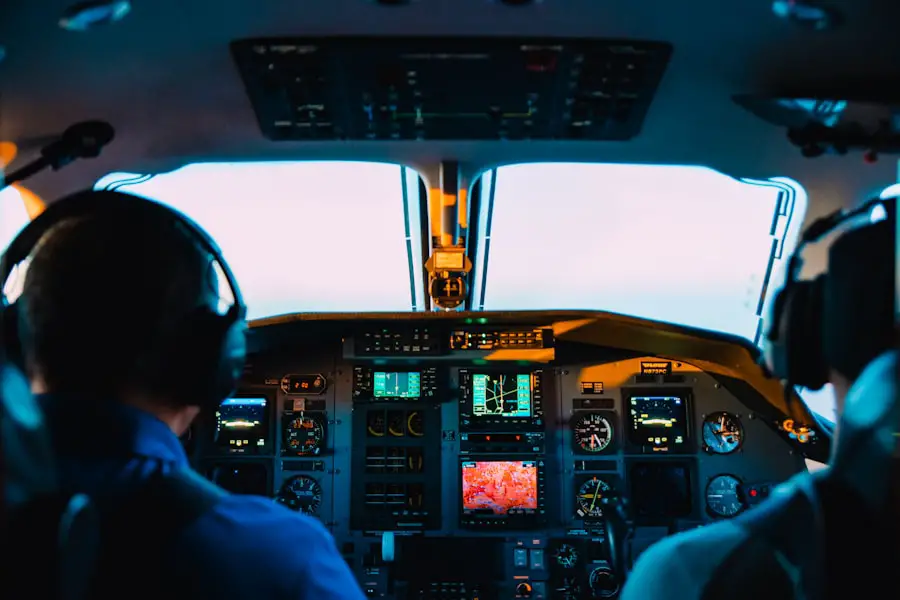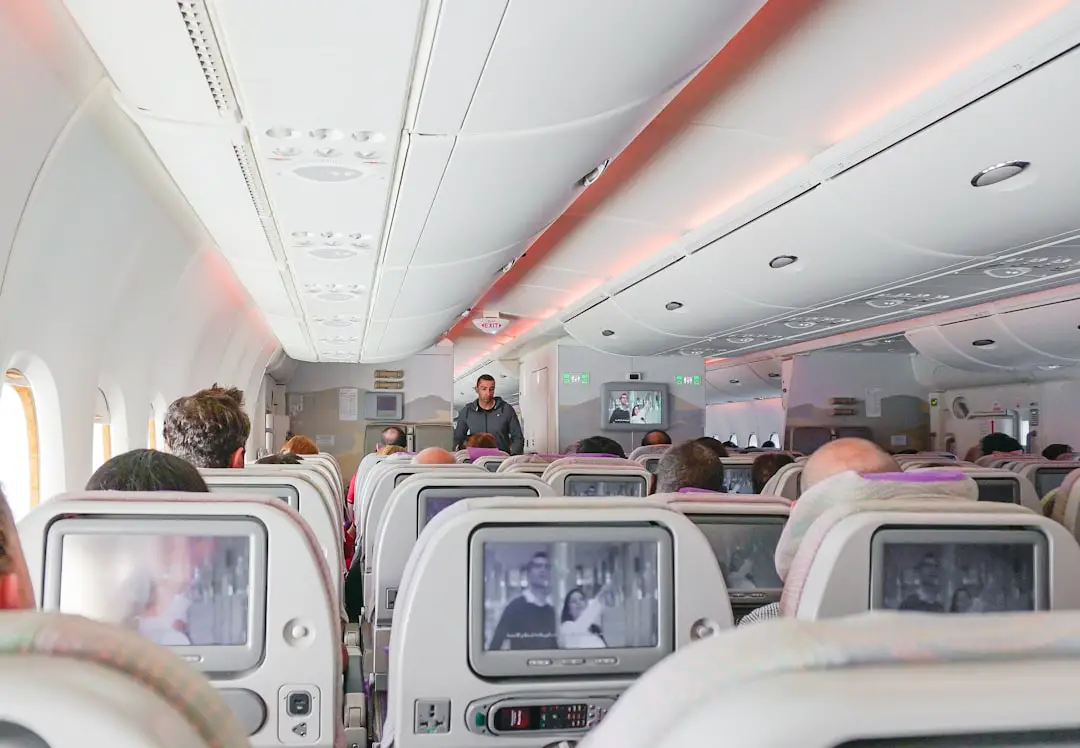Spirit Airlines, a low-cost carrier based in the United States, has garnered attention for its unique business model and pricing strategies. However, when it comes to safety, the airline’s record is a critical aspect that potential passengers often scrutinize. Historically, Spirit Airlines has maintained a relatively clean safety record compared to some of its peers in the low-cost segment.
The airline has not experienced any fatal accidents since its inception in 1980, which is a significant indicator of its operational safety. While there have been incidents involving technical malfunctions or emergency landings, these occurrences are not uncommon in the aviation industry and do not necessarily reflect systemic safety issues. In examining Spirit’s safety record, it is essential to consider the broader context of the airline industry.
The U.S. aviation sector is one of the safest in the world, with rigorous regulations and oversight from the Federal Aviation Administration (FAA). Spirit Airlines operates under these stringent guidelines, which helps ensure that safety remains a top priority.
The airline’s operational history includes a few notable incidents, such as emergency landings due to mechanical issues or medical emergencies onboard. However, these events have not resulted in any loss of life or severe injuries, underscoring the effectiveness of the airline’s safety protocols and emergency response measures.
Key Takeaways
- Spirit Airlines has a satisfactory safety record with no major incidents or accidents in recent years.
- The airline has implemented strict safety measures and protocols to ensure the well-being of its passengers and crew.
- Spirit Airlines pilots undergo rigorous training and have extensive experience in flying commercial aircraft.
- The airline adheres to high maintenance and inspection standards to keep its fleet in top condition.
- Spirit Airlines is equipped with emergency procedures and state-of-the-art safety equipment to handle any unforeseen situations.
Safety Measures and Protocols
Adherence to FAA Regulations
Spirit Airlines strictly adheres to FAA regulations, which mandate regular inspections and maintenance of aircraft. Each aircraft undergoes routine checks before takeoff, ensuring that all systems are functioning correctly and that any potential issues are addressed promptly.
Crew Training and Preparedness
In addition to mechanical inspections, Spirit Airlines emphasizes crew training and preparedness. Flight attendants and pilots undergo extensive training that includes emergency response drills, safety briefings, and customer service protocols. This training ensures that crew members are well-equipped to handle various situations, from turbulence to medical emergencies.
A Culture of Safety
Furthermore, Spirit Airlines has implemented a culture of safety within its organization, encouraging employees to report any safety concerns without fear of reprisal. This proactive approach fosters an environment where safety is prioritized at all levels of operation.
Pilot Training and Experience

The training and experience of pilots are critical factors in ensuring the safety of any airline. Spirit Airlines employs a rigorous selection process for its pilots, requiring them to possess a minimum number of flight hours and relevant certifications before they can join the airline. New hires undergo extensive training programs that cover not only standard operating procedures but also emergency protocols and situational awareness training.
This comprehensive approach ensures that pilots are well-prepared to handle both routine flights and unexpected challenges. Moreover, Spirit Airlines places a strong emphasis on recurrent training for its pilots. This ongoing education includes simulator sessions that replicate various flight scenarios, allowing pilots to practice their responses to emergencies in a controlled environment.
The airline also conducts regular evaluations to assess pilot performance and adherence to safety protocols. By maintaining high standards for pilot training and experience, Spirit Airlines aims to minimize risks associated with human error, which is a leading cause of aviation incidents.
Maintenance and Inspection Standards
| Category | Standard | Metrics |
|---|---|---|
| Maintenance | Frequency | Number of maintenance checks per month |
| Maintenance | Quality | Percentage of maintenance tasks completed on time |
| Inspection | Checklist | Number of items on the inspection checklist |
| Inspection | Accuracy | Percentage of inspections accurately completed |
Maintenance and inspection standards are pivotal in ensuring the airworthiness of an airline’s fleet. Spirit Airlines adheres to stringent maintenance protocols that comply with FAA regulations and industry best practices. Each aircraft in Spirit’s fleet undergoes regular maintenance checks, which include daily inspections before flights as well as more comprehensive checks at specified intervals.
These checks encompass everything from engine performance to avionics systems, ensuring that all components are functioning optimally. In addition to routine maintenance, Spirit Airlines employs a team of qualified technicians who are responsible for conducting thorough inspections of aircraft after every flight. This meticulous attention to detail helps identify any potential issues before they escalate into serious problems.
The airline also utilizes advanced technology for monitoring aircraft performance, allowing for real-time data analysis that can predict maintenance needs before they arise. By investing in robust maintenance practices and employing skilled personnel, Spirit Airlines strives to uphold high safety standards across its operations.
Emergency Procedures and Equipment
Emergency procedures and equipment are vital components of an airline’s safety infrastructure. Spirit Airlines has established comprehensive emergency protocols designed to ensure the safety of passengers and crew in various scenarios. These procedures cover a wide range of situations, including cabin depressurization, engine failure, and medical emergencies.
Crew members are trained extensively in these protocols, enabling them to respond swiftly and effectively when faced with unexpected challenges. In terms of equipment, Spirit Airlines is equipped with state-of-the-art safety gear designed to protect passengers during emergencies. This includes life vests, oxygen masks, and emergency slides that facilitate safe evacuation from the aircraft if necessary.
Additionally, the airline conducts regular drills to ensure that crew members are familiar with the location and operation of emergency equipment. By prioritizing emergency preparedness and equipping its aircraft with the necessary tools for crisis situations, Spirit Airlines aims to enhance passenger safety during flights.
Customer Reviews and Satisfaction

Customer reviews play a significant role in shaping public perception of an airline’s safety record and overall service quality. Spirit Airlines has received mixed feedback from passengers regarding their flying experience. While some travelers appreciate the low fares and no-frills service model, others have expressed concerns about delays, cancellations, and customer service interactions.
These factors can influence perceptions of safety; for instance, frequent delays may lead passengers to question the reliability of the airline’s operations. Despite these mixed reviews, many passengers report feeling safe during their flights with Spirit Airlines. The absence of serious incidents or accidents contributes positively to this perception.
Additionally, the airline’s commitment to transparency regarding its safety measures can help build trust among travelers. By actively addressing customer concerns and maintaining open lines of communication about safety protocols, Spirit Airlines can enhance passenger confidence in its operations.
Recent Incidents and Accidents
While Spirit Airlines has maintained a commendable safety record overall, it is not immune to incidents that can raise concerns among travelers. In recent years, there have been reports of technical malfunctions leading to emergency landings or diversions. For example, an incident involving an engine issue prompted a flight to return shortly after takeoff; however, no injuries were reported, and the situation was handled effectively by the crew.
These incidents highlight the importance of transparency in aviation safety. When such events occur, airlines must communicate clearly with passengers about what happened and how it was resolved. Spirit Airlines has generally been proactive in addressing incidents through official statements and updates on their website or social media channels.
By providing timely information about any occurrences that may affect passenger safety or comfort, the airline can help mitigate concerns while reinforcing its commitment to operational integrity.
Safety Comparison with Other Airlines
When evaluating the safety record of Spirit Airlines, it is essential to compare it with other airlines within the same category as well as larger carriers. Low-cost airlines often face scrutiny due to their budget-oriented business models; however, many have demonstrated strong safety records comparable to traditional carriers. For instance, airlines like Southwest and JetBlue have also maintained excellent safety records while offering competitive pricing structures.
In terms of incident rates per flight hour or per passenger mile traveled, Spirit Airlines performs favorably against many competitors in the low-cost segment. While some larger airlines may have more extensive fleets or higher passenger volumes leading to more reported incidents simply due to scale, Spirit’s lack of fatal accidents since its inception speaks volumes about its operational practices. Ultimately, potential passengers should consider both quantitative data—such as incident rates—and qualitative factors—like customer reviews—when assessing an airline’s overall safety profile.
Regulatory Compliance and Oversight
Regulatory compliance is a cornerstone of aviation safety in the United States. Spirit Airlines operates under strict oversight from the FAA, which enforces regulations governing everything from pilot qualifications to aircraft maintenance standards. The FAA conducts regular audits and inspections of airlines to ensure compliance with these regulations; non-compliance can result in penalties or operational restrictions.
Spirit Airlines has consistently demonstrated adherence to FAA regulations throughout its operational history. The airline participates in voluntary safety programs aimed at enhancing operational standards beyond minimum regulatory requirements. These initiatives often involve collaboration with industry organizations focused on improving aviation safety practices across the board.
By actively engaging with regulatory bodies and industry stakeholders, Spirit Airlines reinforces its commitment to maintaining high safety standards while fostering a culture of accountability within its operations.
COVID-19 Safety Measures
The COVID-19 pandemic has prompted airlines worldwide to implement enhanced health and safety measures aimed at protecting passengers during travel. Spirit Airlines has adopted several protocols designed to mitigate the risk of virus transmission onboard its flights. These measures include enhanced cleaning procedures for aircraft between flights, with particular attention paid to high-touch surfaces such as tray tables and armrests.
Additionally, Spirit Airlines has implemented policies regarding mask-wearing for both passengers and crew members during flights in accordance with public health guidelines at various points during the pandemic. The airline also introduced flexible booking policies allowing travelers greater freedom when rescheduling flights due to changing health circumstances or travel restrictions. By prioritizing passenger health alongside traditional safety measures, Spirit Airlines aims to instill confidence among travelers as they navigate post-pandemic air travel.
Is Spirit Airlines Safe to Fly With?
When considering whether Spirit Airlines is safe to fly with, it is essential to evaluate multiple facets of its operations—from its historical safety record to current practices regarding maintenance and emergency preparedness. While no airline can guarantee absolute safety due to inherent risks associated with aviation travel, Spirit Airlines has demonstrated a commitment to adhering to regulatory standards while fostering a culture focused on operational integrity. Ultimately, potential passengers should weigh their individual comfort levels against available data regarding an airline’s performance history alongside personal experiences shared by fellow travelers when making informed decisions about air travel options available today.
If you are considering flying with Spirit Airlines and are concerned about safety, you may want to read an article on the best lightweight laptop for travel. This article can provide you with tips on how to stay entertained and productive during your flight, giving you peace of mind while traveling with Spirit Airlines.
FAQs
Is Spirit Airlines safe to fly with?
Yes, Spirit Airlines is considered safe to fly with. The airline meets all safety regulations set by the Federal Aviation Administration (FAA) and has a strong safety record.
What safety measures does Spirit Airlines have in place?
Spirit Airlines adheres to strict safety protocols and procedures, including regular maintenance of its aircraft, thorough safety inspections, and compliance with all aviation regulations.
How does Spirit Airlines ensure the safety of its passengers?
Spirit Airlines prioritizes the safety of its passengers by providing ongoing training for its pilots and crew, implementing safety management systems, and conducting regular safety audits.
Has Spirit Airlines had any safety incidents in the past?
Like any airline, Spirit Airlines has experienced safety incidents in the past, but the airline has taken steps to address and improve safety measures to prevent future incidents.
What should passengers do to ensure their own safety when flying with Spirit Airlines?
Passengers can contribute to their own safety by following the instructions of the flight crew, familiarizing themselves with the safety features of the aircraft, and adhering to all safety regulations and guidelines while on board.
